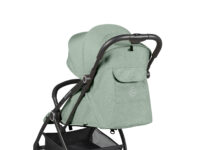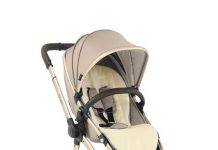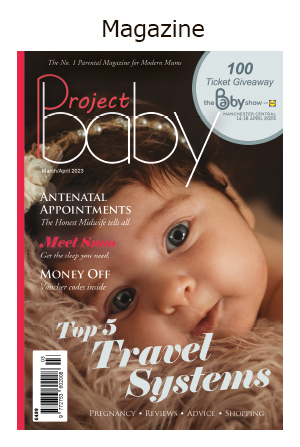Having regular skin-to-skin contact can be a great bonding experience for you and your little one. Here, Margo Marrone,
Co-Founder of The Organic Pharmacy shares her tips for taking care of your baby’s delicate skin.
You’ve finally brought your little bundle of joy home and you probably want to seize every opportunity to bond with them. Regular skin-to-skin contact can help you form a deep connection with your baby, and the bonds you form through physical contact now can serve as the foundation for your baby’s emotional and intellectual development later in life.
One way you can get this physical contact with your baby is by taking care of their skin. Spending the time to massage your little one and apply soothing lotions can not only help keep their skin healthy but can also help you form a connection that will last a lifetime.
Below, I’ll be going through the ways you can take care of your baby’s skin to boost their health and help you bond.
Choose the right products
Your baby’s skin is delicate. In fact, it’s 30% thinner than adult skin, research has found. This not only means it can be sensitive to chemicals and fragrances, but it can also be prone to irritation, dryness, and rashes. This means you’ll need to be a little more selective with the kinds of products you use.
Look for lotions, shampoos, conditioners, and body washes that have been specially designed for baby skin. These products are usually milder than the type of skin care you’ll find for adults and will have been assessed to make sure they’re safe to use on delicate skin.
You should also look for products that are free of parabens and alcohol, both of which can irritate and dry sensitive skin. When it comes to fragrances, look for naturally scented products over artificial ones.
If you’re not sure if a product would be right for your baby’s skin, you can always do a patch test first. Apply a tiny amount of the product to a small area of their skin and wait 24 hours. If their skin doesn’t show signs of redness or irritation, then it’s safe to use the product.
Treat common skin issues
Because your baby’s skin is so sensitive, it’s very normal to notice a few issues such as dryness and irritation. These are usually caused by environmental factors such as sweating, sensitivity to dyes or detergents on their clothes, or rubbing from their nappy or clothing. Luckily, you can usually treat most irritation at home using the right skincare.
Dry skin: Dryness is one of the most common skin complaints among adults and babies. The best way to deal with it is by moisturising your little one regularly with a baby-safe lotion. You might also want to keep baths to a maximum of five minutes and at a temperature of around 37°C. Then, apply a moisturiser while their skin is still damp. Good skin starts from within, so make sure your baby is also getting plenty of fluids, too.
Eczema: Eczema is a common skin irritationthat produces an itchy red rash on the cheeks, scalp, arms, legs, and torso. If you notice eczema on your baby’s skin, apply a little (baby-safe) moisturiser after their bath while the skin is still slightly damp. If it doesn’t clear up, it’s best to speak to a paediatrician who can suggest another form of treatment.
Nappy rash: Nappy rash appears as a sore, red rash around your baby’s bottom and usually occurs as a result of too much moisture and not enough air. To help get rid of it, you can try leaving their nappy off for around 10 minutes as you’re changing them. You can also try applying a gentle nappy balm which will help ease irritation and soreness.
Heat rash: Heat rash occurs on areas of your baby’s skin that are prone to sweating, such as in elbow creases, behind the knees, and under the armpits. Keeping your baby cool and applying loose-fitting clothing can help to treat it.

Baby acne: Infant acne isn’t often talked about, but it can be a fairly common condition that can affect babies of any age. This is completely normal and is just a result of hormones. Although it looks just like adult acne, it needs to be dealt with a little differently. Blemishes will usually go away on their own eventually, so it’s important to leave them alone to help them heal fully. Simply wash your little one’s skin with water two or three times a day and avoid using any products on the areas of flare-ups.
Have regular skin-to-skin contact
Having regular skin-to-skin contact is beneficial for many reasons. For one, it can help calm both you and your little one and helps regulate heart rate and temperature. Having close skin contact with your baby can also stimulate the release of hormones, which could help support breastfeeding and increase your baby’s interest in feeding.
You can have skin-to-skin contact with your baby as soon they’re born, continuing with it for as long as your little one will allow you to. To do it, lay them across your chest and wrap yourself in a blanket to keep you and your baby warm.
If you feel like doing this will make you fall asleep, you could also try the same method of sitting up which should help keep you awake.
Try massage therapy
Another way to get skin-to-skin contact with your little ones is by massaging them. Not only will this help improve your bond, but it can also help you both to feel calm and relaxed. For this reason, it’s a good idea to massage your baby just before putting them down to sleep.
To massage your baby, use baby-friendly massage oil. Look for products scented with essential oils such as lavender, chamomile, and calendula, which will not only smell amazing but will also help to soothe sensitive skin. If you choose a product containing sunflower oil, then their massage can also help to protect the natural battier of your baby’s skin.
It’s important to remember that it’s not recommended that you use massage oils on your baby’s skin within the first month. This is because, during this time, the top layer of your baby’s skin is very thin and can be more prone to redness and irritation when using products. After a month, your little one’s skin will develop a protective barrier that can make it safe to use oils and lotions.
You can create the right massage conditions by dimming the lights or switching on a lamp. Find a comfortable place to lay your baby — this could be on the floor, sofa, or bed — and make sure you place a towel underneath them in case any oil drips.
Then, remove any jewellery and wash your hands. Apply a small amount of oil, warm it up in your hands, and begin gently massaging your little one focusing on their ankles, legs, and feet before moving onto their tummy and arms. When massaging your baby, remember to support the arm or leg you’re working on with one hand as you massage with the other. It might also help to rub their tummy in a clockwise motion to help aid digestion.
Getting enough skin-to-skin contact with your baby is important. By taking care of their skin and enjoying regular cuddles and massages, you can help form a bond that will last a lifetime.


















